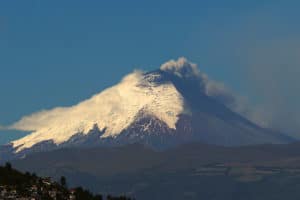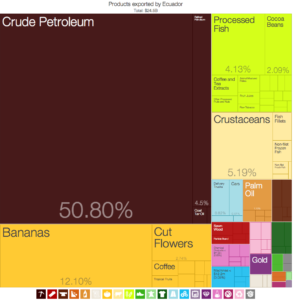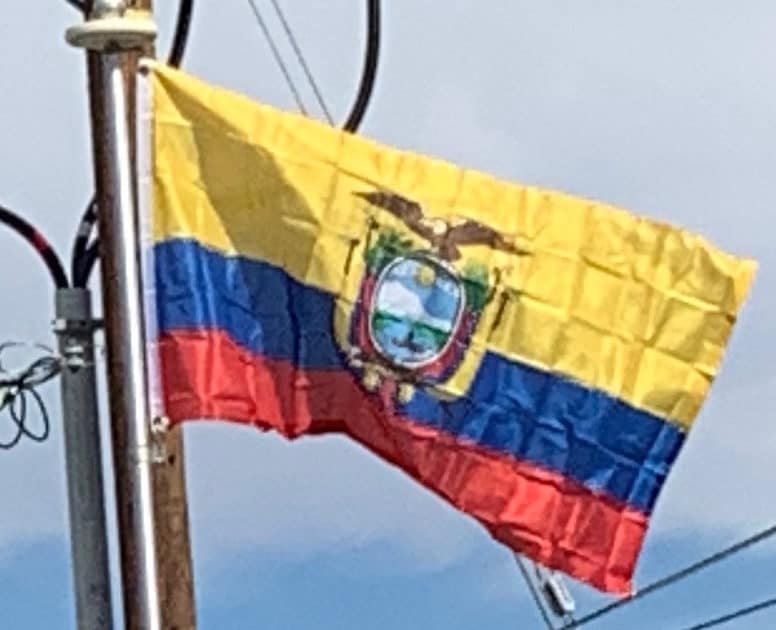La Sierra, or “the highlands”: The sierra consists of the Andean and Interandean highland provinces – Azuay, Cañar, Carchi, Chimborazo, Imbabura, Loja, Pichincha, and Tungurahua. This land contains most of Ecuador’s volcanoes and all of its snow-capped peaks. Agriculture is focused on the traditional crops of potato, maize, and quinua and the population is predominantly Amerindian Kichua. The largest Sierran city is Quito.

La Amazonía, also known as El Oriente, or “the east”: The oriente consists of the Amazon jungle provinces – Morona Santiago, Napo, Orellana, Pastaza, Sucumbíos, and Zamora-Chinchipe. This region is primarily made up of the huge Amazon national parks and Amerindian untouchable zones, which are vast stretches of land set aside for the Amazon Amerindian tribes to continue living traditionally. It is also the area with the largest reserves of petroleum in Ecuador, and parts of the upper Amazon here have been extensively exploited by petroleum companies. The population is primarily mixed Amerindian Shuar, Huaorani and Kichua, although there are numerous tribes in the deep jungle which are little-contacted. The largest city in the Oriente is probably Lago Agrio in Sucumbíos, although Macas in Morona Santiago runs a close second.
La Región Insular is the region comprising the Galápagos Islands, some 1,000 kilometres (620 mi) west of the mainland in the Pacific Ocean.
Ecuador’s capital is Quito, which is in the province of Pichincha in the Sierra region. Its largest city is Guayaquil, in the Guayas Province. Cotopaxi, just south of Quito, is one of the world’s highest active volcanoes. The top of Mount Chimborazo (6,268 m, or 20,560 ft, above sea level), Ecuador’s tallest mountain, is the most distant point from the center of the Earth on the Earth’s surface because of the ellipsoid shape of the planet.
Economy:
Ecuador has a developing economy that is highly dependent on commodities, namely petroleum and agricultural products. The country is classified as an upper-middle-income country. Ecuador’s economy is the eighth largest in Latin America and experienced an average growth of 4.6% between 2000 and 2006. From 2007 to 2012, Ecuador’s GDP grew at an annual average of 4.3 percent, above the average for Latin America and the Caribbean, which was 3.5%.

The extreme poverty rate has declined significantly between 1999 and 2010. In 2001, it was estimated at 40% of the population, while by 2011 the figure dropped to 17.4% of the total population. This is explained to an extent by emigration and the economic stability achieved after adopting the U.S. dollar as official means of transaction (before 2000, the Ecuadorian sucre was prone to rampant inflation). However, starting in 2008, with the bad economic performance of the nations where most Ecuadorian emigrants work, the reduction of poverty has been realized through social spending, mainly in education and health.
Oil accounts for 40% of exports and contributes to maintaining a positive trade balance. Since the late 1960s, the exploitation of oil increased production, and proven reserves are estimated at 6.51 billion barrels as of 2011.
